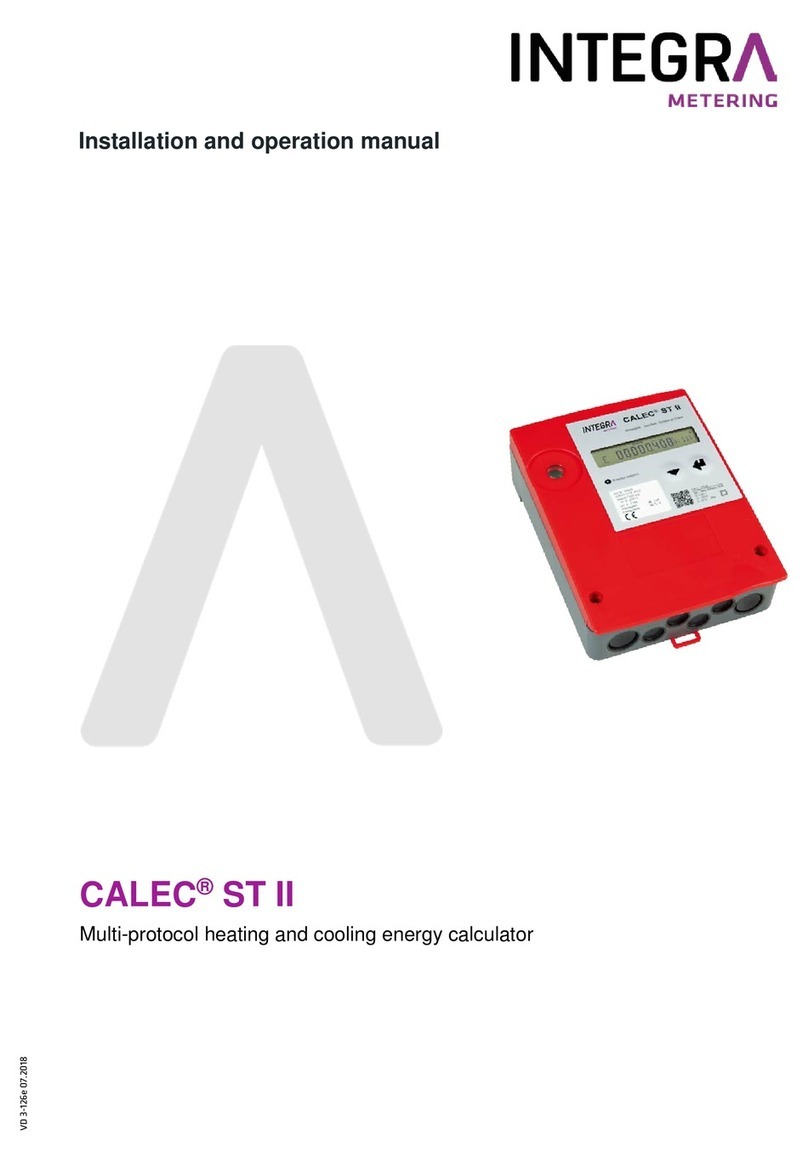
Introduction
CI-3K50601 Project 2191 DMR2731 Rev.1 18-08-11 5
1 Introduction
This document provides operating, maintenance and installation instructions for the Crompton
Instruments Integra Ri3 DIN rail mounted energy meter. The unit measures and displays the
characteristics of single phase, three-phase 3-wire or three-phase 4-wire supplies, including
voltage, frequency, current, power and real and reactive energy, imported or exported. Energy is
measured in terms of Wh, kWh, MWh, VArh, kVArh and MVArh, since it was last reset. Maximum
demand current can be measured over preset periods of up to 60 minutes. In order to measure
energy, the unit requires voltage and current inputs in addition to the supply required to power the
product. The requisite current input(s) are obtained via current transformers (CT).
The Ri3 can be configured to work with a wide range of CTs, giving the unit a wide range of
operation. Built-in interfaces provide pulse and RS485 Modbus™/JC N2 outputs. Configuration is
password-protected.
The unit can be powered from a separate auxiliary (a.c. or d.c.) supply. Alternatively it can be
powered from the monitored supply, where appropriate.
1.1 Unit Characteristics
The Ri3 can measure and display:
Line voltages and THD% (total harmonic distortion) of all phases
Line frequency
Currents, current demands and current THD% of all phases
Power, maximum power demand and power factor
Active Energy (Wh, kWh or MWh) imported and exported
Reactive Energy (VArh, kVArh or MVArh) imported and exported
The unit has password-protected set-up screens for:
Changing password.
Supply system selection 1ph, 3ph3w or 3ph4w.
CT primary current (1 to 9999A)
Demand interval time
Reset for cumulative energy and demand measurements
Pulse output duration and rate divisor
RS485 serial Modbus™ or JC N2 format
A pulsed relay output indicates real-time energy measurement. An RS485 output allows remote
monitoring from another display or a computer.
1.2 Current Transformer Primary Current
The unit can be configured to operate with CT primary current of between 1 and 9999A. Maximum
CT primary current corresponds to a maximum input current to the unit of 5A.
1.3 RS485 Serial - Modbus™ or JC N2Protocol
This uses an RS485 serial port with Modbus™ or Johnson Controls (JC) N2 protocol to provide a
means of remotely monitoring and controlling the Ri3 unit.
Set-up screens are provided for setting up the RS485 port. See Section 4.8.































